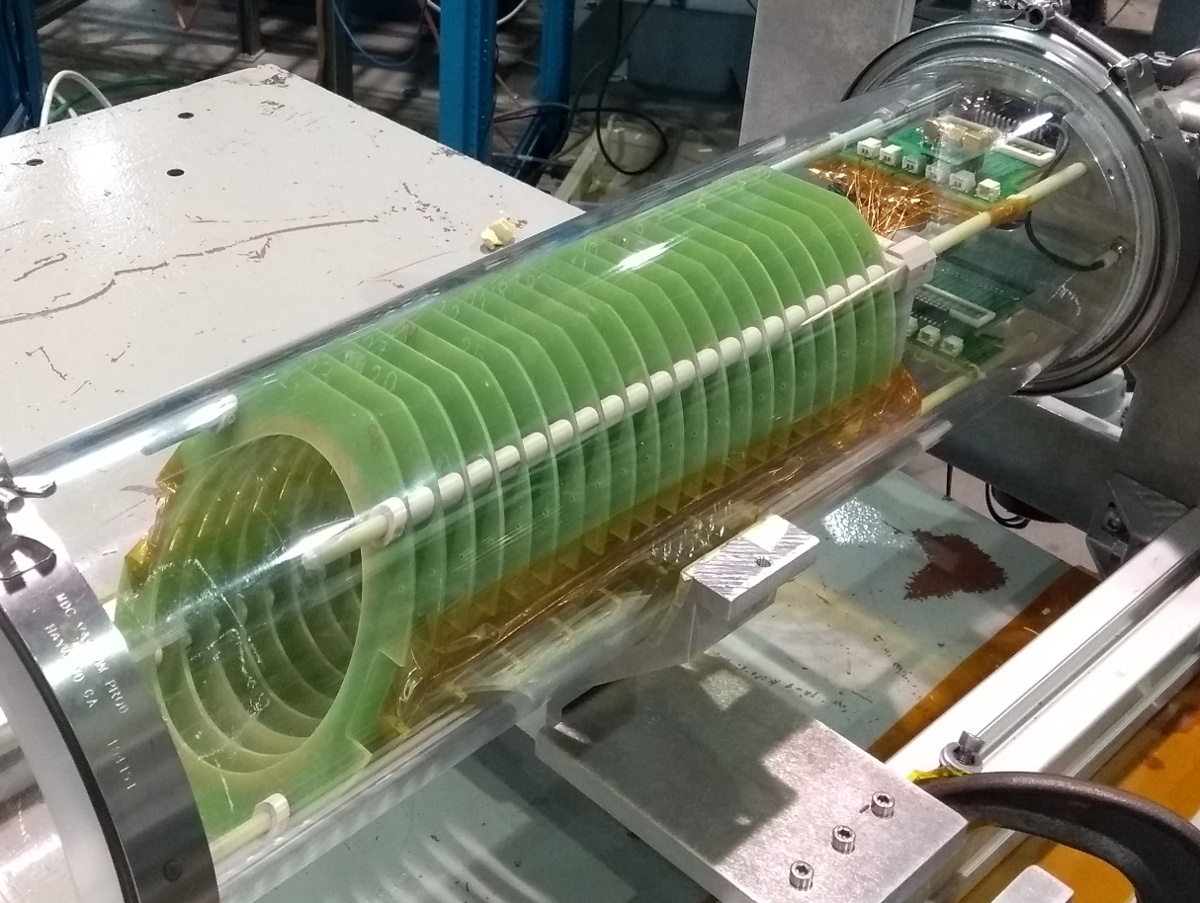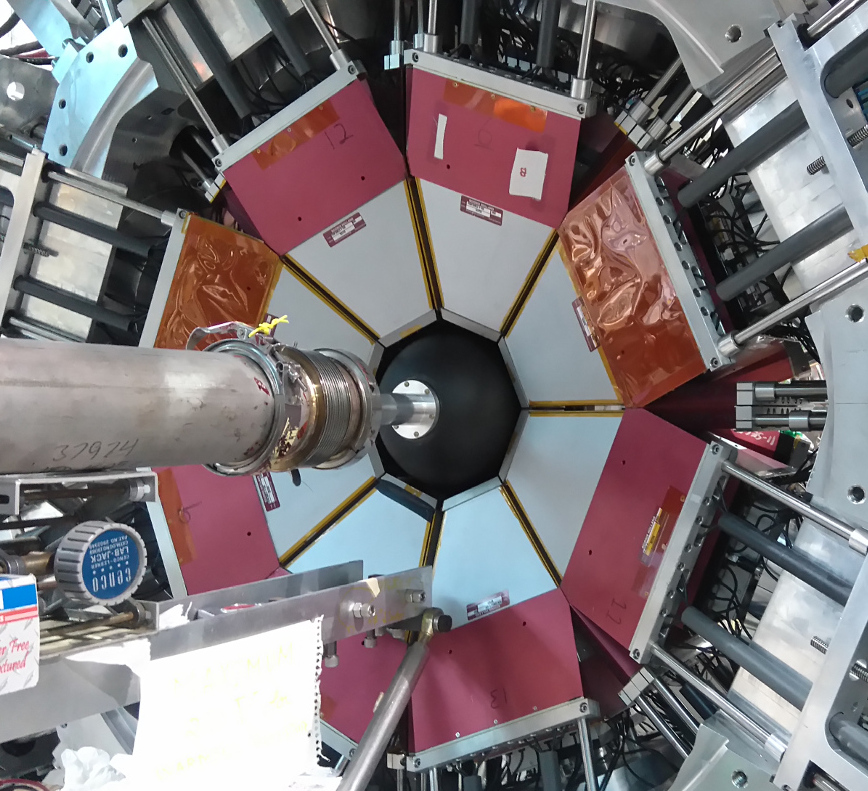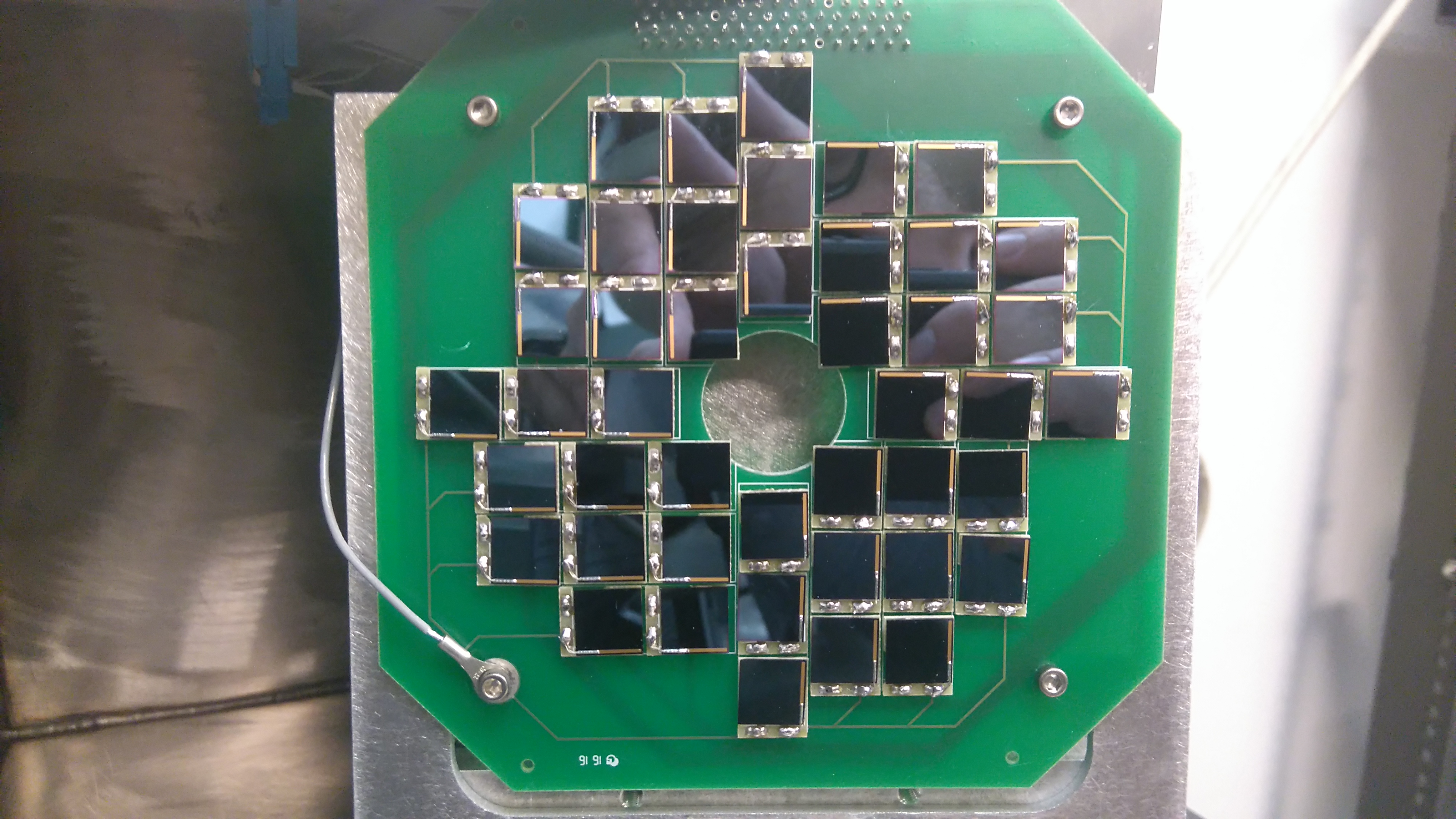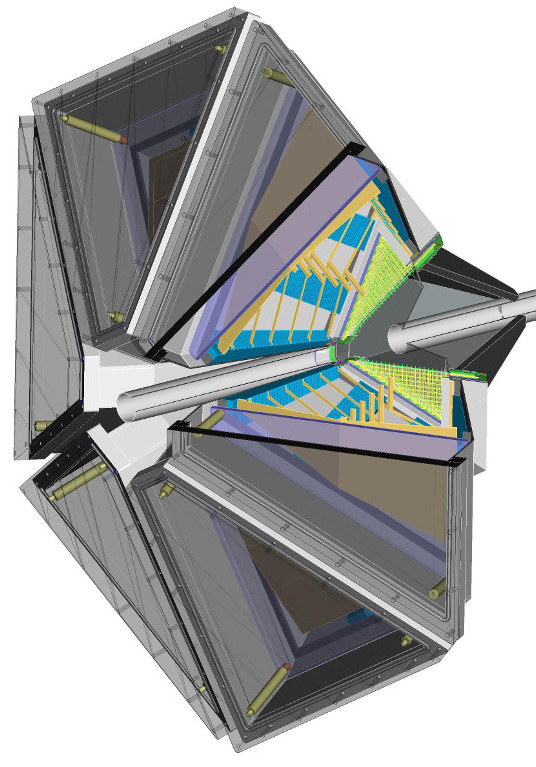Detectors
In addition to carrying out accelerator-based experiment, I also lead the design and construction of novel scientific instruments to enable my experiments push the boundaries of what is achievable and study exotic radioactive nuclei far from stability.
DICE
I am currently in the early stages of development of a new device, the Downstream Internal Conversion Electron (DICE) spectrometer. This project focuses on improving the kinematic corrections possible for the measurement of internal conversion electrons over that of the currently available detectors. Doing so will make it possible to perform spectroscopy of fast moving nuclei over 10% the speed of light, for which the Lorentz boost usually destroys the spectroscopic information of emitted particles. This will in turn enable the study of E0 transitions from shape-coexisting states in nuclei far from stability which can only be produced in reactions at high velocities. DICE’s first BSc project students has optimised the ideal geometry in order to determine the limits of achievable resolution and efficiency. Future students will look at the effects of implementing a more realistic geometry and the addition of background shielding.

TRIFIC
The TRIUMF Fast Ion Count (TRIFIC) is a gas-filled ion detector designed to provide on-line identification of the composition of cocktail radioactive ion-beams at the TRIUMF ISAC-II facility. This is achieved by a series of wire grids which divide the ionisation signal of incoming ions to provide a discrete Bragg curve and provide event-by-event Z identification. The segmentation of the ionisation volume enables the detector to run at rates of up to 500 kHz. I led the design, construction of the TRIFIC, supervising a team of several project students and postdocs.


Using money from a University of Liverpool School of Physical Sciences Post-doctoral Development Award I improved the position sensitivity of TRIFIC to enable greater track reconstruction and hence increased ion identification.



SPICE
The SPectrometer for Internal Conversion Electrons (SPICE) is detector which I commissioned for use in conjunction with the TIGRESS gamma-ray spectrometer at TRIUMF’s ISAC-II facility. SPICE features a permanent rare-earth magnetic lens to collect and direct internal conversion electrons emitted from nuclear reactions to a thick, highly segmented, lithium-drifted silicon detector. This arrangement, combined with TIGRESS, enables in-beam gamma-ray and internal conversion electron spectroscopy to be performed with stable and radioactive ion beams.



Pin Diode Array
The Pin Diode Array is a low-cost scattered ion detector designed and commissioned by a BSc projected student at TRIUMF under my supervision. Using off-the-shelf silicon photodiodes, as an alternative to high cost silicon strip detectors, the individual detectors elements can be swapped following experiments in which significant radiation damage results from intense ion beams.

York Bragg Detector
The York Bragg Detector is a gas filled detector for the detection and identification of scatted ions in Coulomb excitation experiments. As part of my PhD at the University of York I organised and led the commissioning of the Parallel Grid Avalanche Counter (PGAC) which mounts at the front of the detector to provide position information.



